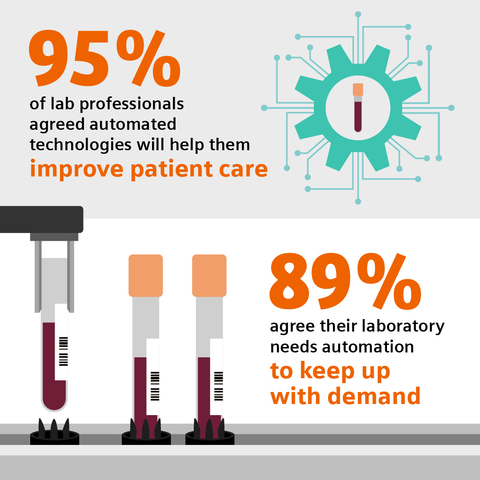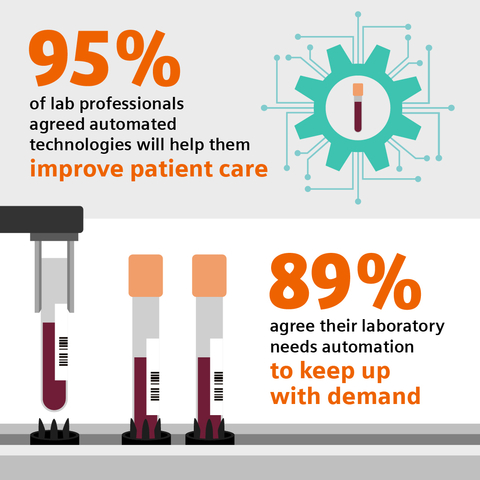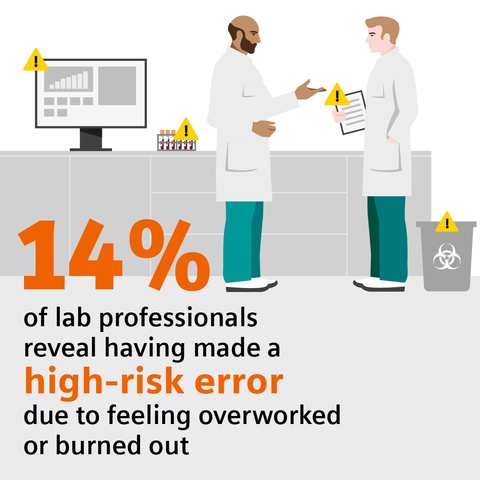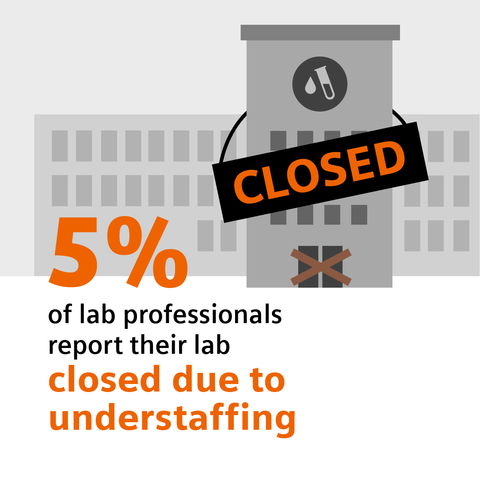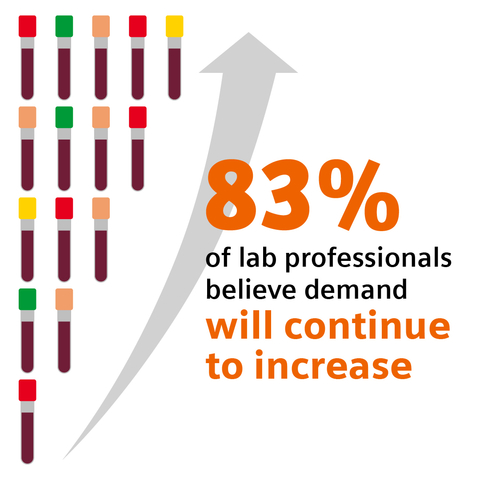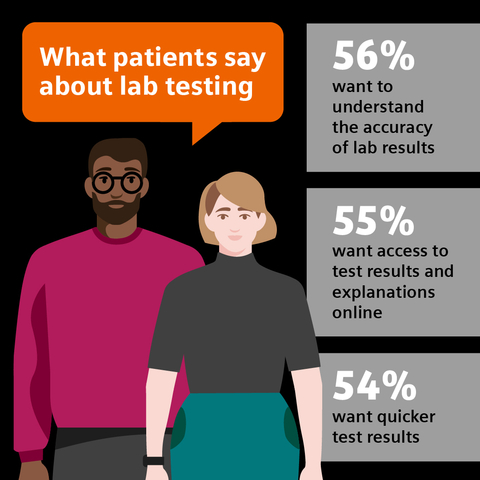TARRYTOWN, N.Y.--(BUSINESS WIRE)--A new survey from Siemens Healthineers and The Harris Poll1 reveals the toll prolonged understaffing is taking on clinical laboratory personnel and the patients they serve. As reliance on laboratory diagnostic testing in the U.S. healthcare system continues to grow, so does the pressure on laboratory professionals who process more than 14 billion tests ordered annually.2 These essential workers are dedicated to a high-quality standard for patients. New data reveals how burnout can hinder their ability to maintain this standard. Automation is widely believed to be a key element in solutions to address some of the major challenges.
"The ability of lab professionals to reliably produce accurate test results under time constraints is foundational to patient care and trust in the healthcare system,” said Michele Zwickl, head of Laboratory Solutions for Diagnostics, Siemens Healthineers North America. “For years, laboratory professionals have raised staff frustrations amid rising test demand—now we have concrete data to illustrate the impact. To continue to perform to a high standard, some laboratories are waving the proverbial white flag and leaning into automation.”
Conducted June 17-28, 2024, the survey of 408 U.S. laboratory professionals in the healthcare industry overall recognizes the value they bring to patients and their medical peers. Most laboratory professionals participating in the survey (95%) agree that they are a critical part of the healthcare system, and nearly as many (94%) believe they can make a positive impact on patient outcomes. However, they continue to operate with fewer laboratory staff. Vacancy rates in laboratories are estimated to be 7–11%, and as high as 25% in some geographies.3
Nearly two-in-five (39%) laboratory professionals rank limited staff to support laboratory operations as their greatest challenge. Five percent of laboratory professionals reported that their lab had closed temporarily because of understaffing. Closures delay the patient testing that is relied upon to inform 70% of today’s medical decisions.2 Healthcare professionals depend upon precise and timely test results for their effective patient diagnosis, treatment, and management.
Automation and AI tools will help tackle staffing challenges
A majority (83%) of laboratory professionals believe the demand for laboratory services will continue to increase, underscoring the urgency of finding solutions to the ongoing workforce shortage. Although more than half (52%) of laboratory professionals agree that automation threatens their job and one-in-four (27%) cite fear of losing their job among reasons they are reluctant to adopt new technologies, 95% agree that adoption of automated technologies will help them to improve patient care.
Laboratory professionals acknowledge that high- and low-risk errors may be made in the laboratory due to being overworked or burned out. Low-risk errors were categorized as administrative, documentation, or repeat-testing-related errors, while high-risk errors involved biohazard exposure for staff or reporting incorrect test results. Fourteen percent of laboratory professionals personally admit they have made a high-risk error and 22% a low-risk error. However, 24% admit they have never made a high-risk error, but have witnessed high-risk errors made by other staff members. A nearly equal percentage say they have never made a low-risk error but have witnessed low-risk errors (25%). An additional 29% of laboratory professionals say they have never made a low-risk or a high-risk error but worry about making one due to feeling overworked or burned out.
With fewer repetitive, manual tasks to handle, laboratory professionals indicated they would reallocate their saved time to training and mentoring employees (46%), performing more quality control troubleshooting (42%), and more efficiently managing the test sample process across departments (39%). Nearly nine-in-ten (89%) laboratory professionals agree their laboratories need automation to keep up with demand, with 91% agreeing that utilizing AI tools and technology can help address unmet patient care challenges or needs.
Virginia Moseley, executive director of Clinical Lab at Singing River Health System, who did not participate in the survey and whose lab already uses automation, reacts, “In our lab system, we run very lean and have system supervisors who are supported by medical lab techs or medical lab scientists. With automation, our full-time employees help with duties for supervisors who float between labs. Automation takes the burden off the tech having to prioritize what issue to take care of first. It also allows us to hire lab assistants so our medical laboratory scientists can focus on testing.”
Zwickl adds, “Our focus on human-centered engineering addresses the specific needs of each lab and standardizes tasks that safeguard quality and lab safety. Patient care relies on laboratory scientists’ expertise, which must continue to be nurtured through training and mentorship. Automation can eliminate repetitive manual tasks that introduce human error, increase efficiency, and give staff time back to focus on what they want to achieve to improve healthcare.”
Download the survey report here.
1 The research was conducted online in the United States by The Harris Poll on behalf of Siemens among 408 US adults, 18+ who work full time or part time as laboratory professionals in the healthcare industry. Respondents also work in a lab that does not solely focus on genetic and/or molecular testing. Phlebotomists do not qualify. The survey was conducted June 17 – 28, 2024. For more details, please see the survey report. |
Siemens Healthineers pioneers breakthroughs in healthcare. For everyone. Everywhere. Sustainably. The company is a global provider of healthcare equipment, solutions and services, with activities in more than 180 countries and direct representation in more than 70. The group comprises Siemens Healthineers AG, listed as SHL in Frankfurt, Germany, and its subsidiaries. As a leading medical technology company, Siemens Healthineers is committed to improving access to healthcare for underserved communities worldwide and is striving to overcome the most threatening diseases. The company is principally active in the areas of imaging, diagnostics, cancer care and minimally invasive therapies, augmented by digital technology and artificial intelligence. In fiscal 2023, which ended on September 30, 2023, Siemens Healthineers had approximately 71,000 employees worldwide and generated revenue of around €21.7 billion. Further information is available at www.siemens-healthineers.com.

